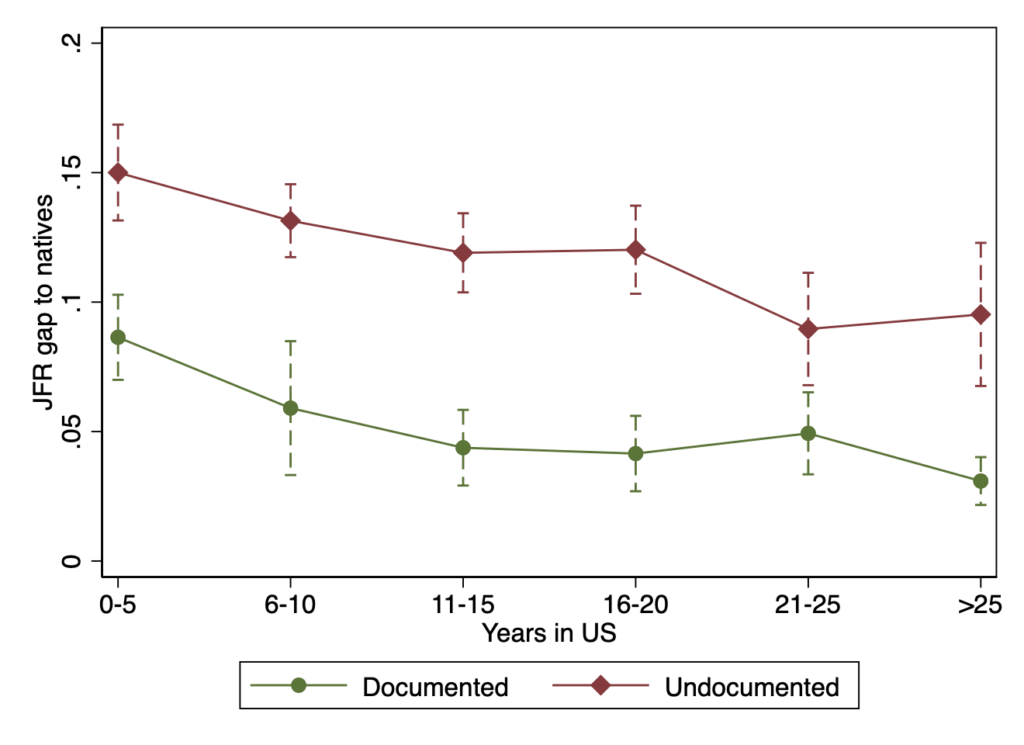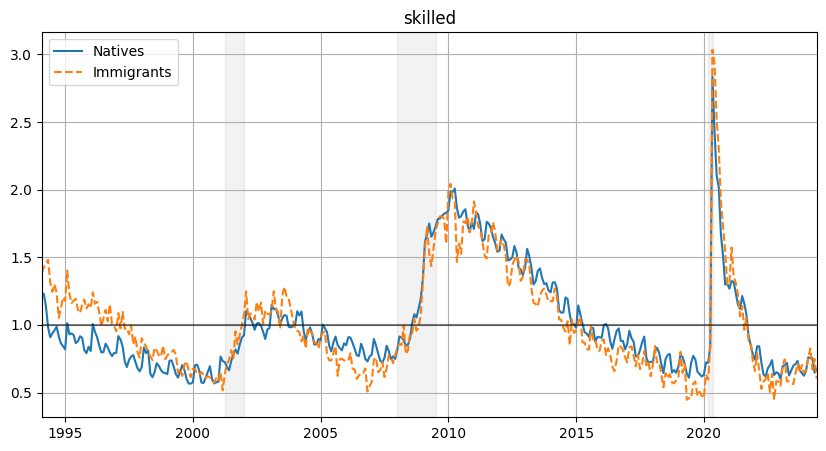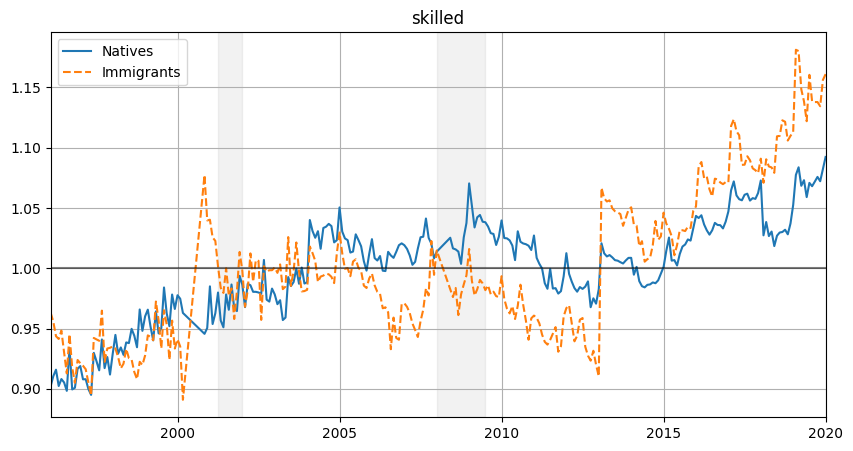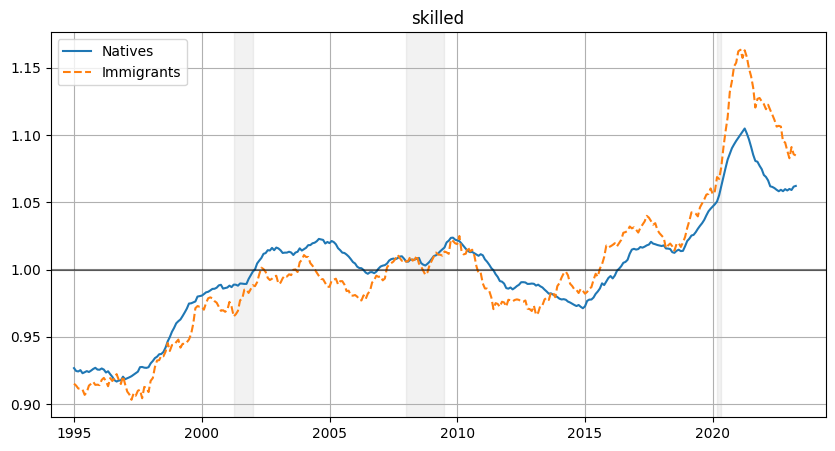Abigail McLaughlin ’26
This summer I worked with Professor Esteban Argudo in the economics department to explore the effect of business cycles on the income and employment nativity for immigrant and native populations in the United States. The ultimate goal was to formally quantify the differential effects of business cycles on labor market outcomes for native and immigrant populations.
I began by collecting data from the Current Population Survey (CPS) through IPUMS to complement the analysis done using the Survey of Income and Program Participation (SIPP) data. Since the time series dimension of the data analysis requires the harmonization of variables, IPUMS was the best option for data collection, despite the fact that it required new code.
I replicated figures from existing literature (Albert 2021) to ensure the IPUMS data (right) was the same as the raw CPS data (left).
Job Finding Rate Gap to Natives


There is a slight discrepancy between the figures, attributed to a difference in the number of observations. Since the Census Bureau releases the basic and supplement files as separate files and IPUMS integrates and releases the supplement files as a part of the data, IPUMS has slightly more observations.
The CPS data (right) was then used to complement the findings from the SIPP data (left). It indicated that the unemployment rate for immigrants was consistently higher than natives up until 2008. A similar story is true for wages, the average wage of immigrants becomes higher between 2010 and 2015. Further regression analysis and data visualization will help to explain why.
SIPP & CPS Data Skilled Workers Unemployment Rate


SIPP & CPS Data Skilled Workers Wages


My experience with this project reinforced the importance of data in forming a qualitative argument. Data provides numbers that tell a story, however, it is further analysis that explains what that story is.
